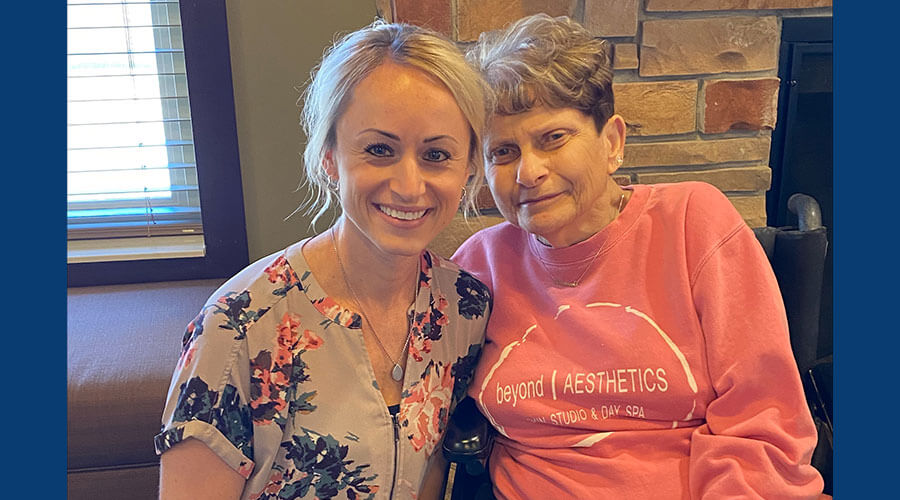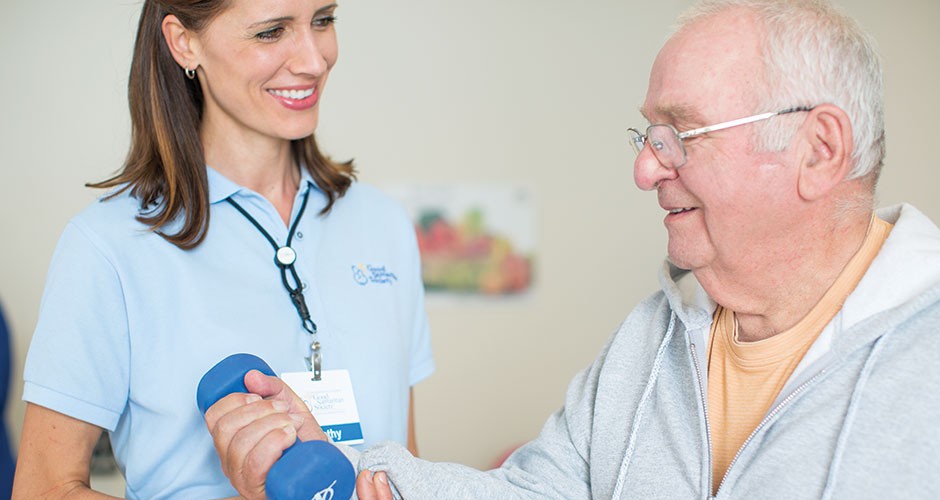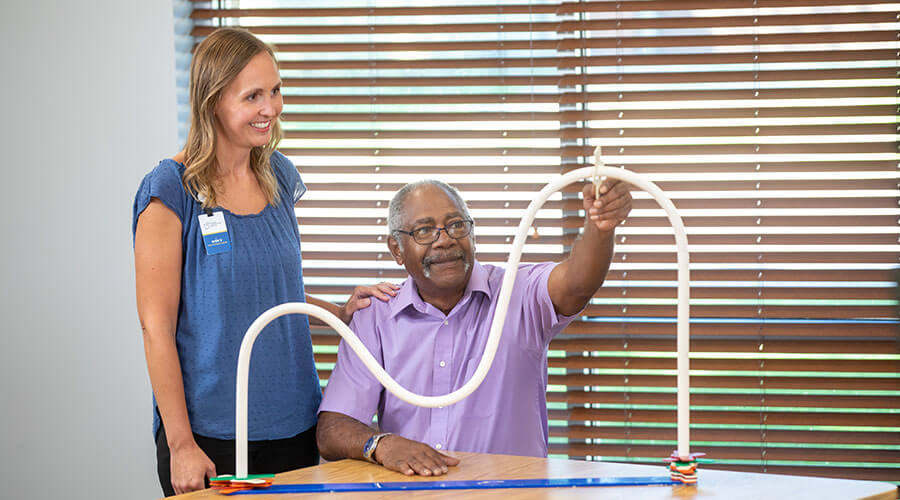There are many tasks that people perform every day to give their lives structure and meaning. When someone struggles to do daily tasks independently, it can impact how they view themselves and the world around them.
Occupational therapy can help reclaim that meaning.
“With occupational therapy, we work on helping people become as independent as possible while improving their quality of life,” says Cassie Thompson, supervisor of therapy and rehabilitation at Good Samaritan Society – International Falls in International Falls, Minnesota.
Occupational therapy is one of the main three types of rehabilitation therapy available to Good Samaritan residents, clients and patients. Learn more.
It helps restore and develop the skills a person needs for productive and meaningful daily living, including bathing, dressing, eating and meal preparation.
Cassie and her staff work with residents in the nursing home and patients who are there temporarily receiving rehabilitation therapy. They also visit clients in their home. They see an average of nine people a day. Some sessions are only 30 minutes long, while others go for an hour or more.
“Whether it’s adapting or improving a skill, we work on getting every person to do skills to the best of their ability,” says Cassie.
In long-term care, occupational therapists work with people of all ages facing a variety of different challenges, from stroke or injury recovery to bladder incontinence.
“Occupational therapy focuses on functional ability so we can get people back to enjoying their leisure tasks. It helps maintain quality of life, independence and safety,” Cassie says.
Helping clients return home
Occupational therapists often work side by side with physical therapists and speech therapists.
“We all come together as a team,” says Cassie.
She and her team regularly do home assessments for home care clients and rehab patients who are going home. They make recommendations so clients and patients can be as safe as possible.
“That’s one of my favorite parts,” Cassie says. “It’s a great feeling taking someone home and seeing them succeed and knowing they will be successful.”
Rehab patients are sometimes able to go home within a few weeks, but therapy can continue for as long as a patient needs. According to Cassie, recovery varies by the patient because it’s impacted by their motivation and the extent of their injury or diagnosis.
When a resident is working on going home, they start as an inpatient and then transition to home care where they train on applying the skills they’ve learned. After this, they graduate to outpatient therapy.
Therapy for the mind
Because the goal of occupational therapy is to keep clients as independent and safe as possible, therapists often work with them on cognitive skills so they can remain in their own homes and accomplish the tasks necessary for daily living.
“When people think about therapy, they tend to think it’s only physical, but it works with cognition as well,” says Cassie.
As people age, their recall, problem solving and thought processes start to change. This can impact their ability to handle medications, shop for groceries, drive safely and even remember to change clothes.
Therapists can help stimulate memory with visual aids and provide clients with adaptive devices – such as a walker, ramp or specific type of chair – to help with activities of daily living.
“Cognitive decline isn’t the end,” says Cassie. “Occupational therapy plays a huge role to help as much as possible.”
Learn more about the three types of rehab therapy and how they can help you or a loved one.




